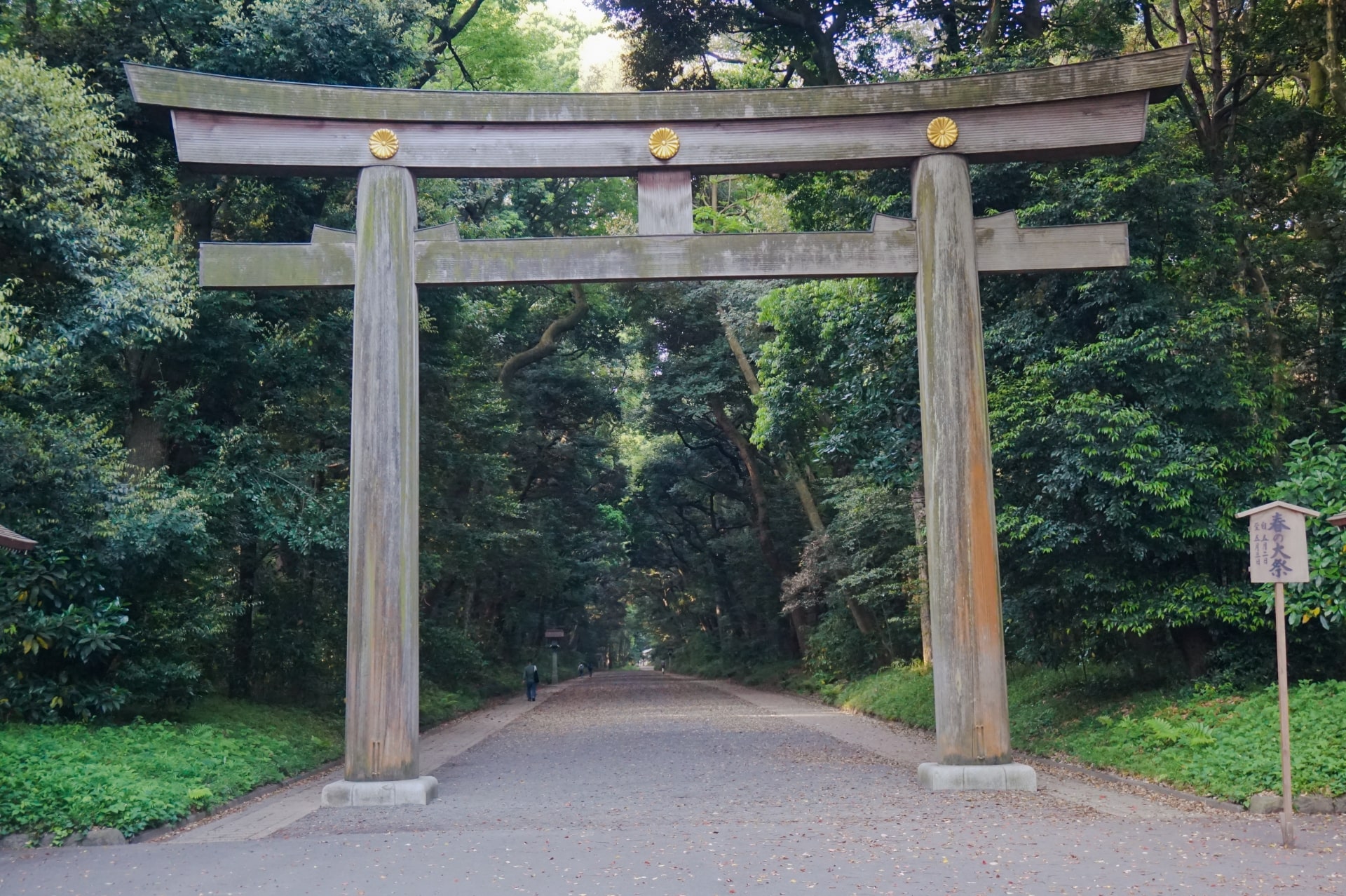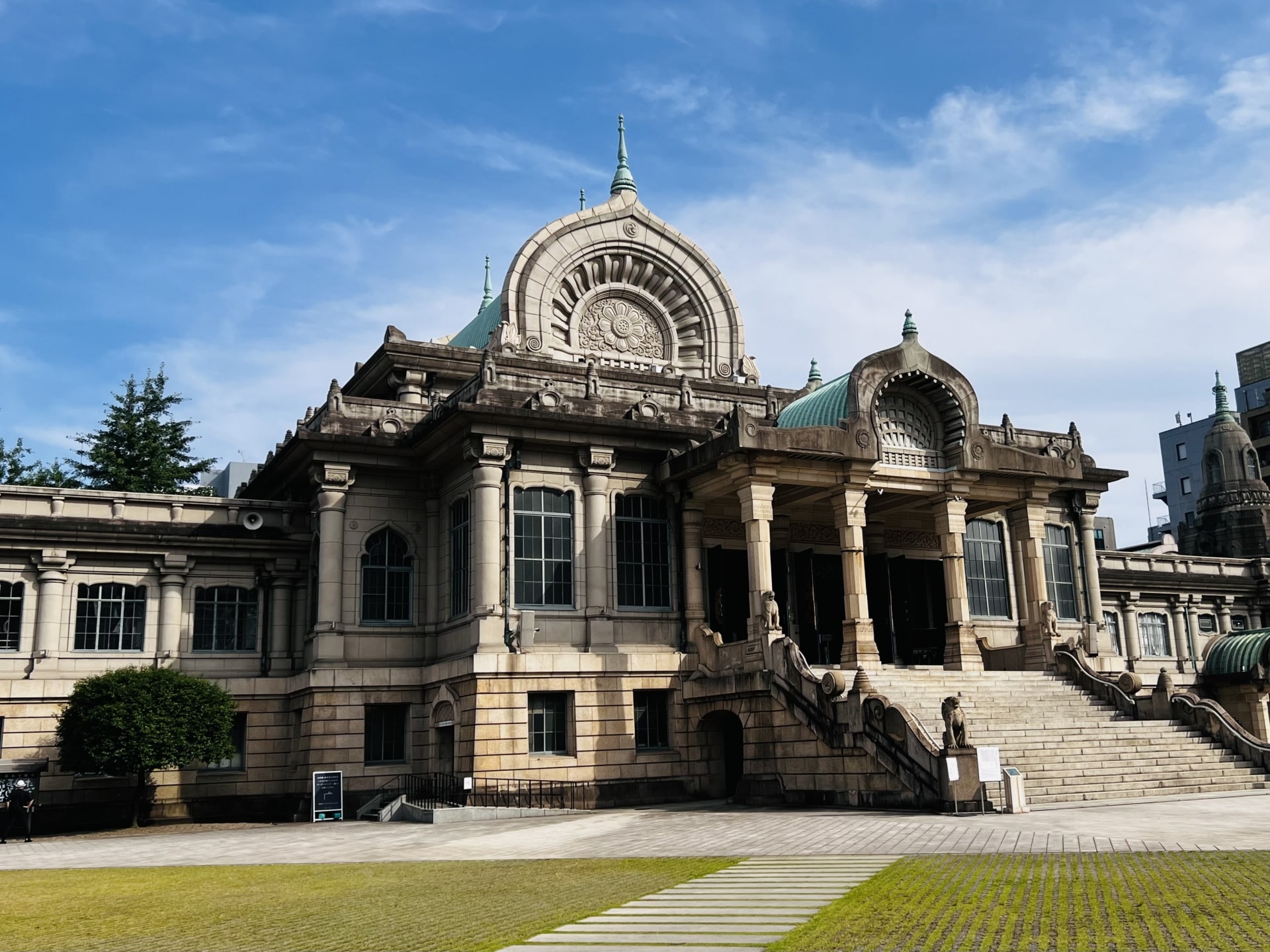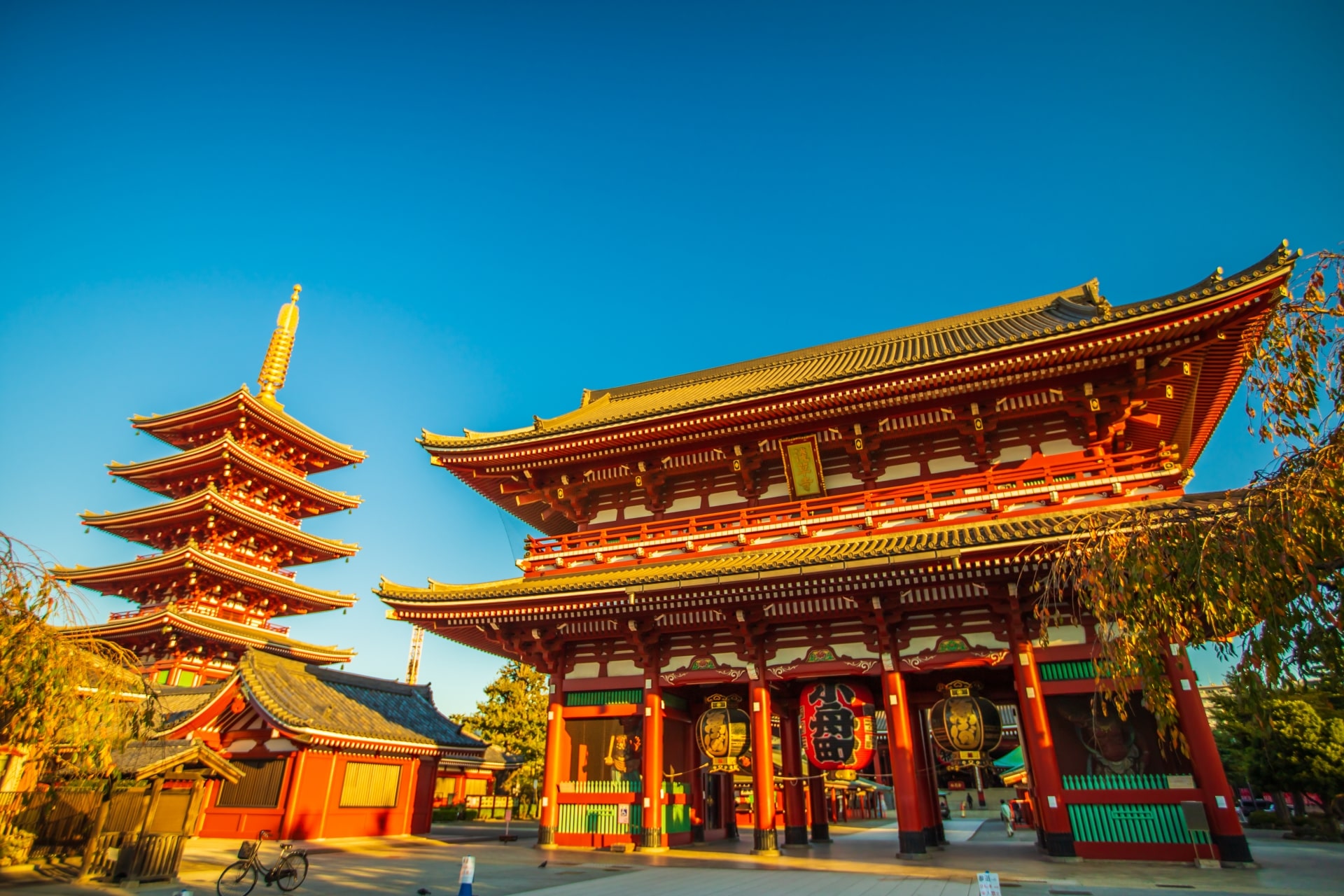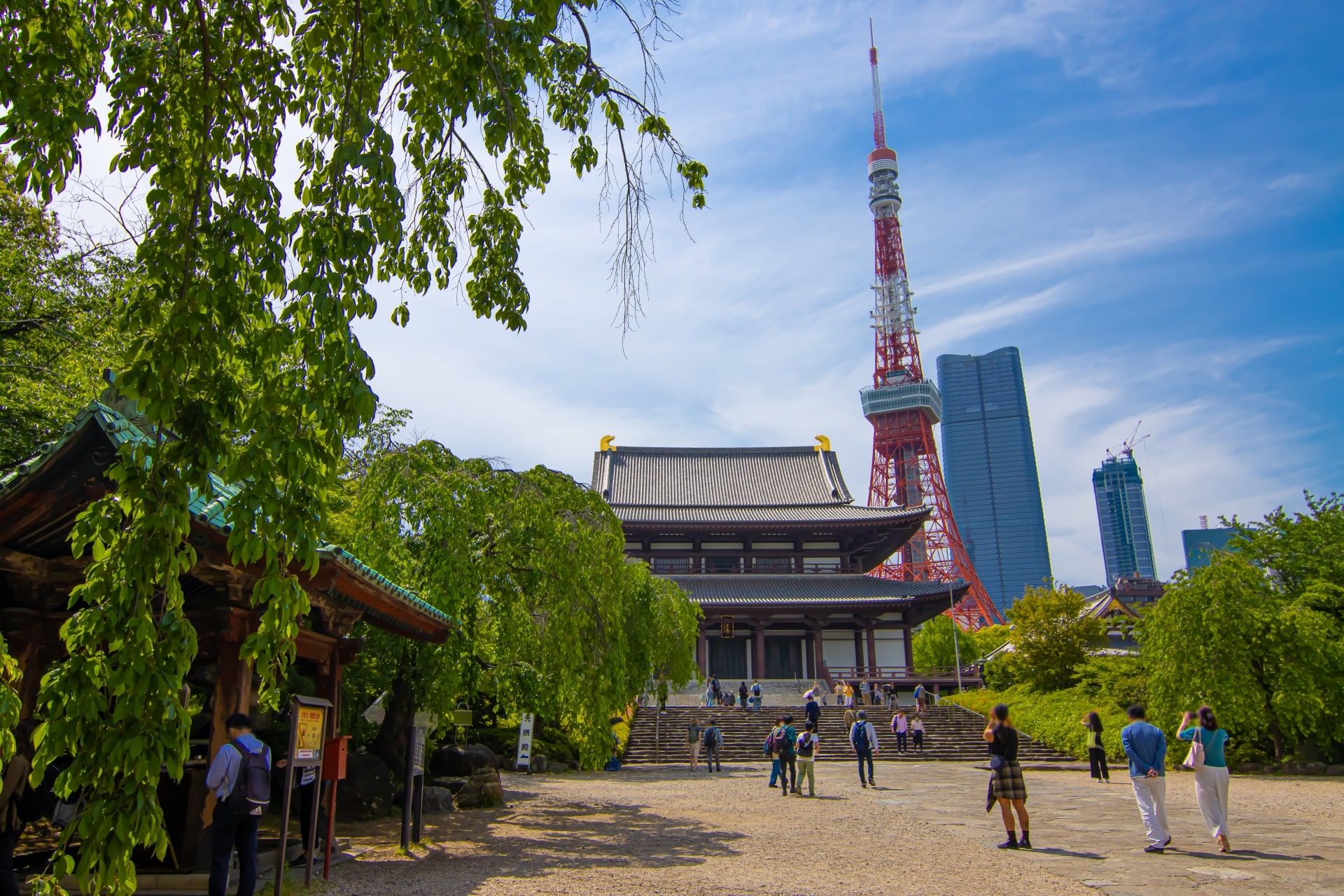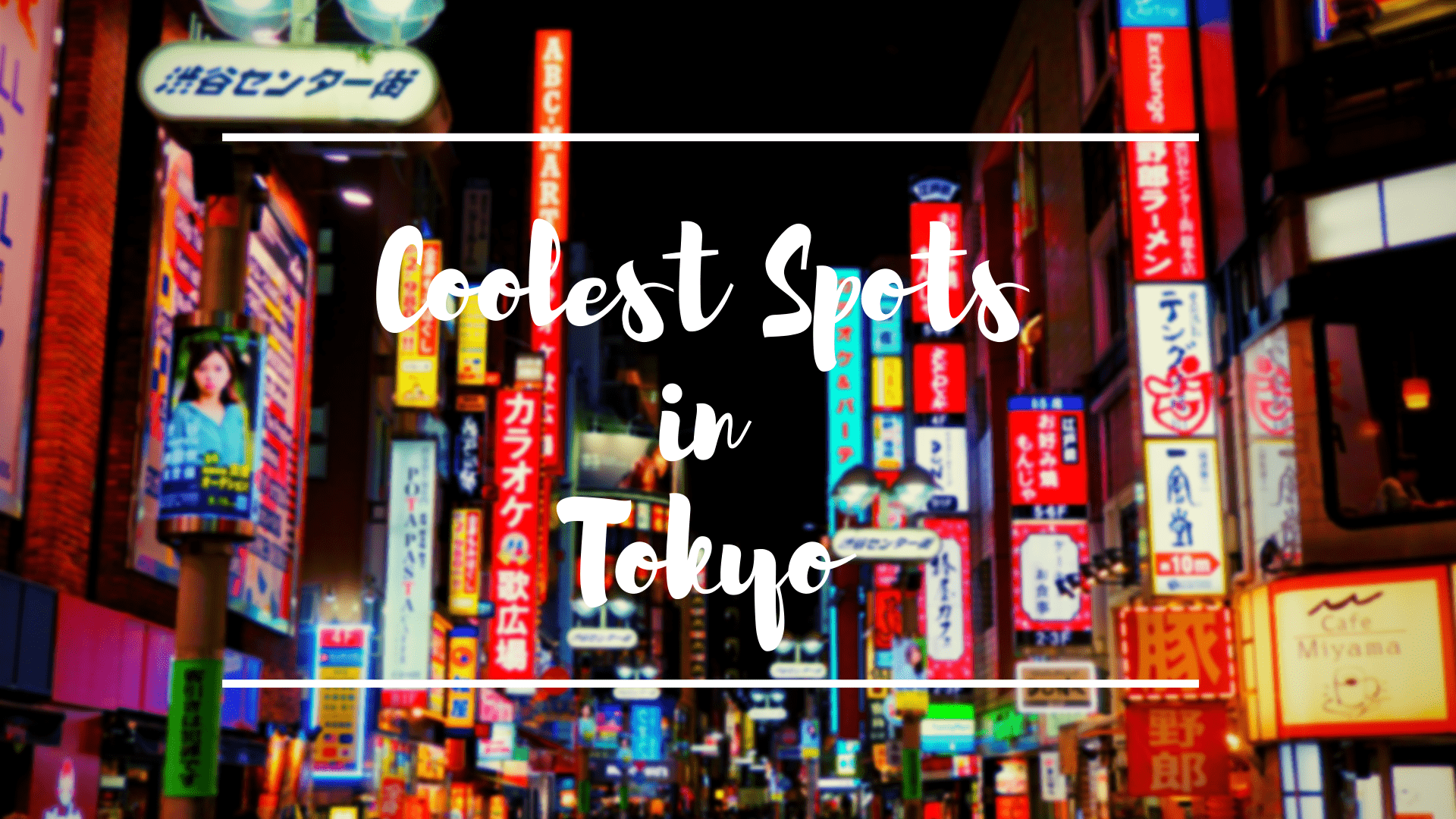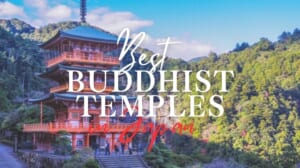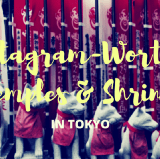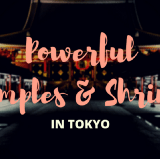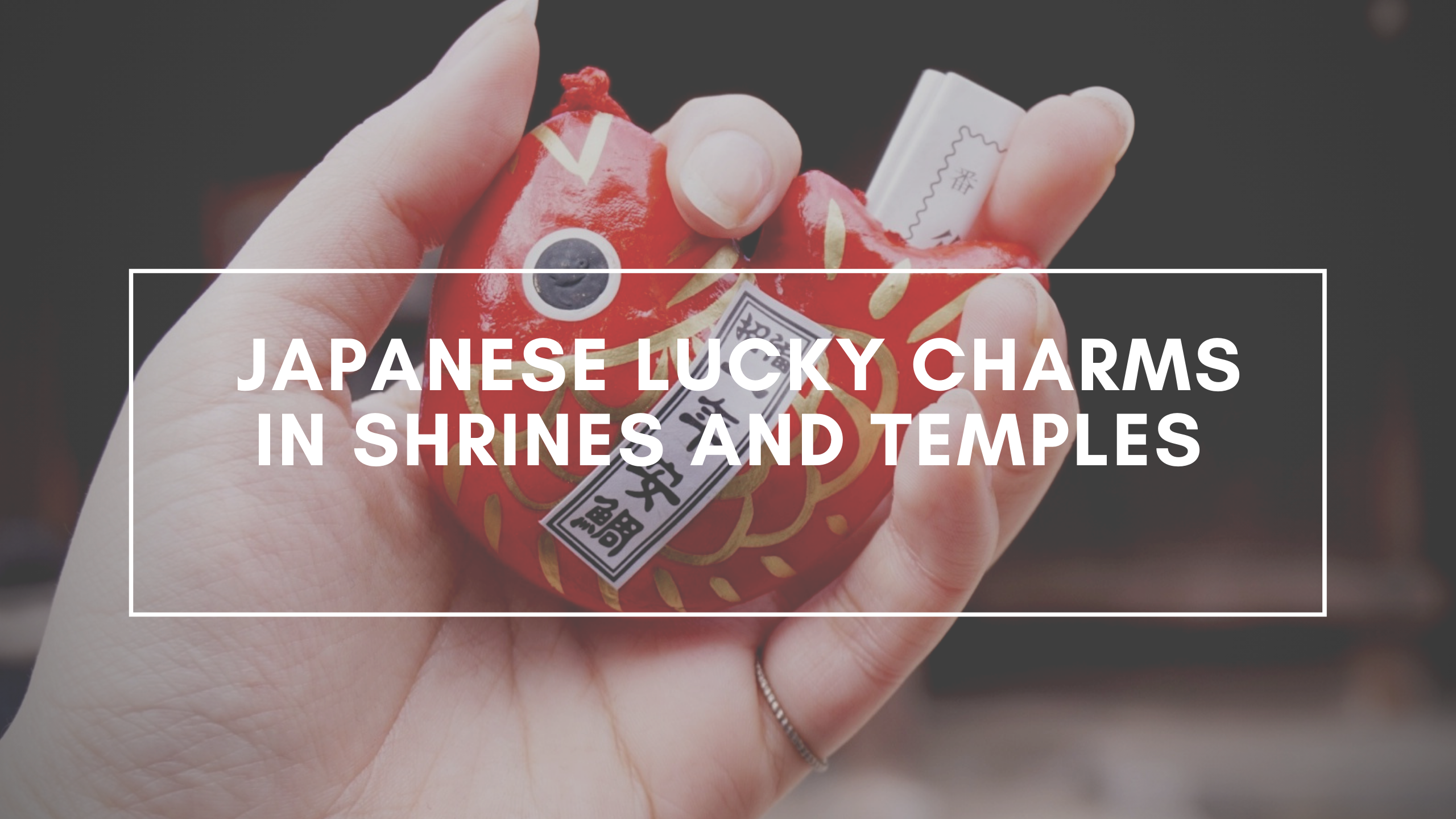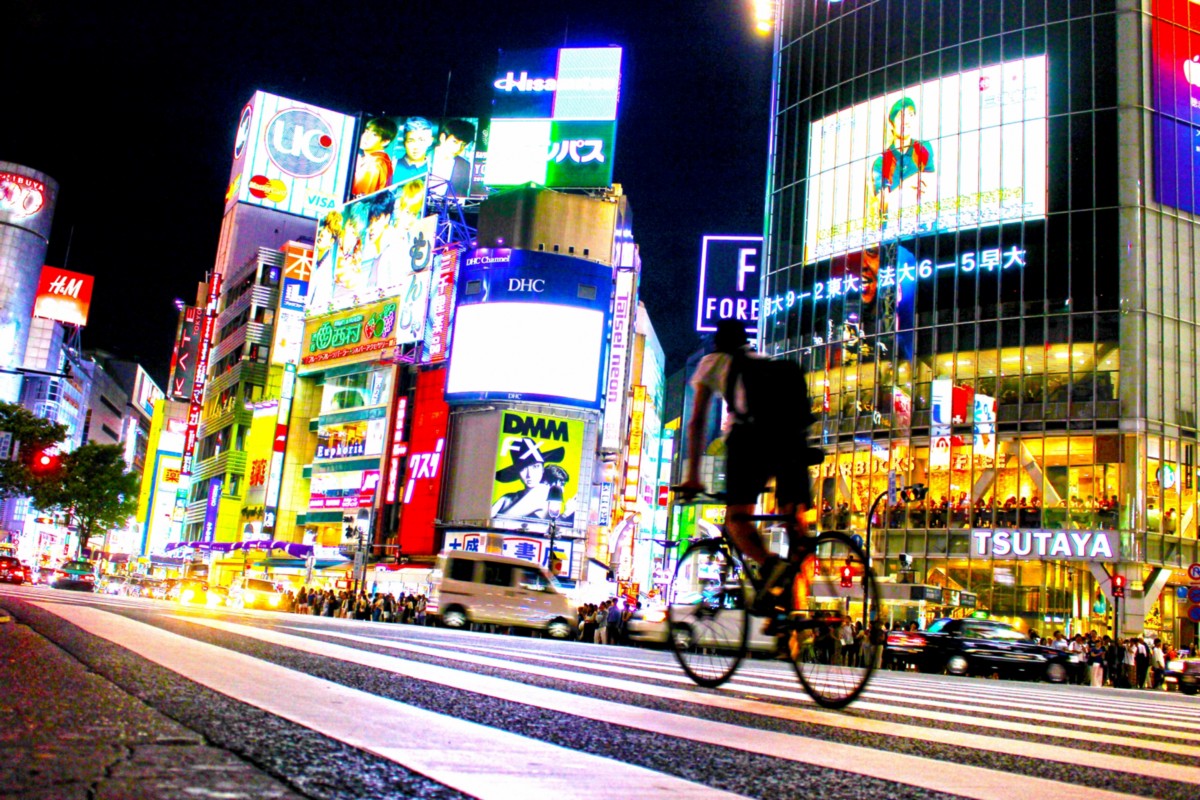Best Temples and Shrines to Visit in Tokyo
Must-Visit Shrines and Temples in Tokyo by Area
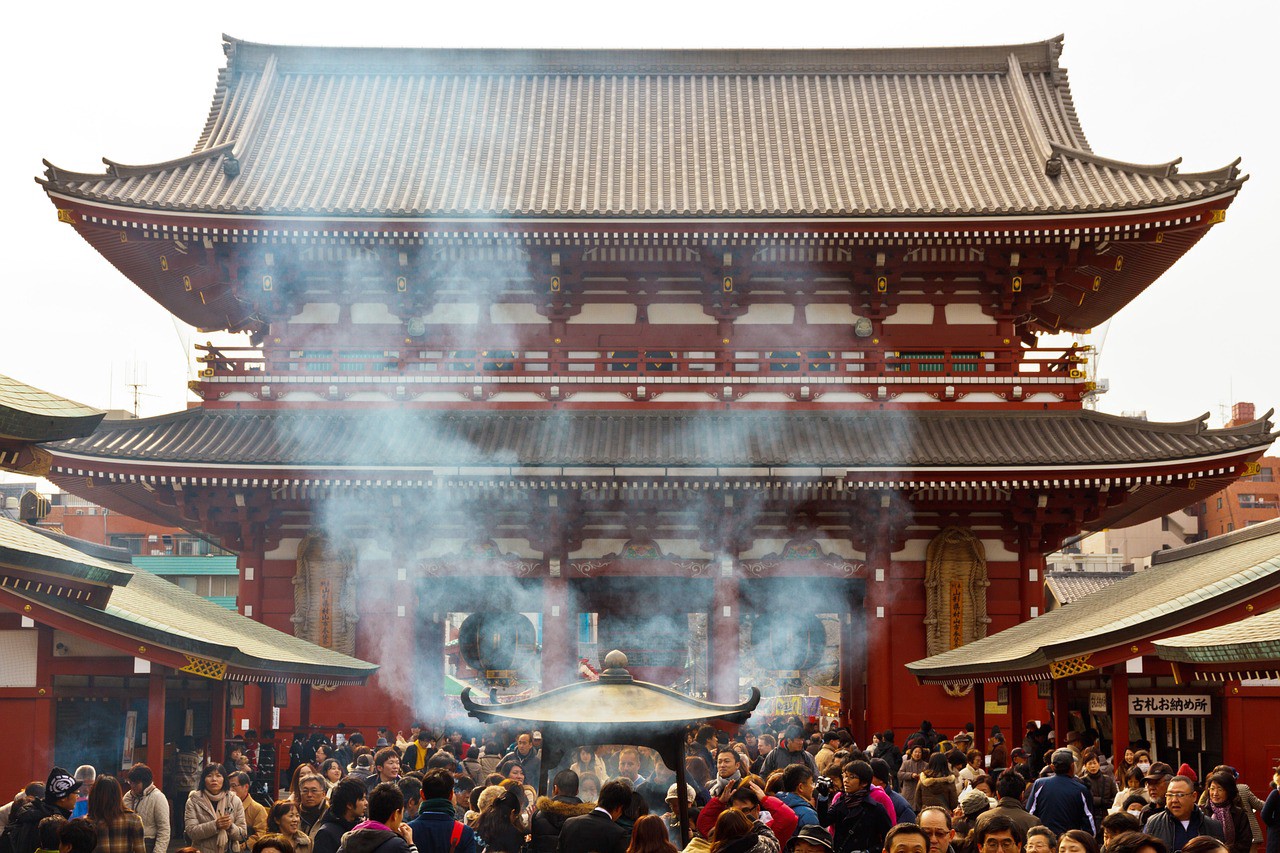
Historical monuments including temples and shrines are top tourist attractions in Japan as they present the rich history and unrivalled beauty of the country. Kyoto might be the famous destination for exploring the great abundance of well-preserved historical sites, however, the modern capital city Tokyo has also numbers of historical landmarks.
For your information, there are over 4,000 shrines and temples in Tokyo. Some of them are well known among tourists as top tourist sites of the city, but there are plenty more interesting ones that not many of us have probably heard of.
From sacred Shinto shrines to unique photo-worthy temples, I’m going to introduce my picks of must-visit temples and shrines in Tokyo by area!
-Shibuya/Harajuku/Shinjuku Area
The Shibuya, Harajuku and Shinjuku area is known for being a center of Tokyo’s pop-culture and has a young, vibrant and bustling atmosphere. Shibuya is one of the busiest districts in Tokyo with the world famous landmark, the scramble crossing. Harajuku is known as the birthplace of Japanese kawaii culture and Tokyo’s street fashion, and is home to hundreds of boutiques and shops. Shinjuku is the biggest red-light district in Tokyo with flashy neon lights, known as the city that never sleeps.
Although these three districts are filled with young and modern culture, there are a few temples and shires where visitors can discover the historic sides. If you are visiting the area for shopping and entertainments, why don’t you stop by at the historical sites and have a peaceful and pleasant time!
Meiji Shrine
Meiji Shrine/Meiji Jingu (明治神宮), located in Harajuku area, is one of the largest Shinto shrines in Tokyo which was constructed in 1920 as a dedication to the Meiji Emperor and the Shoken Empress. It’s surrounded by a vast forest offering a tranquil and peaceful atmosphere away from the hustle and bustle of the city
More info: Meiji Shrine: Most Popular Landmark in Harajuku
Gotokuji Temple
Gotokuji Temple (豪徳寺) is one of the most unique and photo-worthy temples in Tokyo where you can meet countless Manekineko (beckoning cat). Manekineko figurine is believed to bring luck to an owner and once their wish is fulfilled, they bring figurines back to the temple, which creates a very unique sight.
More info: Gotokuji Temple: the Cate Temple in Tokyo
Hanazono Shrine
Hanazono Shrine/Hanazono Jinja (花園神社), located a center of Shinjuku area, is a Inari shrine build in the middle of the 17th century. It’s believe to be beneficial for marital harmony, child-giving, marriage and love knot, and it is especially popular among young women.
More info: Hanazono Shrine: a Large Shinto Shrine in Shinjuku
-Tsukiji Area
Tsukiji area is best known for the Tsukiji Fish Market. The inner market of Tsukiji was relocated to Toyosu in 2018, however, shops and restaurants at the outer market still remain and operate their business at the same locations. Tsukiji is located within a walking distance from Ginza area which is great for shopping.
If you get tired of walking, how about stopping by at one of shrine or temple and take a moment to relax??
Tsukiji Honganji Temple
Tsukiji Honganji Temple (築地本願寺) is one of the most beautiful temples in Tokyo, located only one minute away from Tsukiji outer market. The Jodo Shinshu Buddhist temple has an unique appearance with ancient Indian style decor.
More info: Tsukiji Honganji Temple
Namiyoke Shrine
Namiyoke Shrine/Namiyoke Jinja (波除神社) is a small Shinto shrine located in Tsukiji area. The meaning of the name Namiyoke is “protecting from waves” and the shrine has been serving as a guardian for the marketplace and its traders since Tsukiji Market was established.
Official website: http://www.namiyoke.or.jp/
-Asakusa/Ueno Area
Asakusa and Ueno are popular tourist destinations in Tokyo best known for the historical buildings and the great old downtown atmosphere. Asakusa’s Sensoji Temple is one of the top landmarks of Japan, and the surrounding area represents the good old Tokyo vibes. Ueno’s best attraction is Ueno Park, and there are numbers of tourist attractions within the park such as Ueno Zoo, museums and several temples and shrines.
In Asakusa, Ueno and their neighbours, amazing historical sites and great nature can be enjoyed while being in the ultra-modern city, Tokyo.
Sensoji Temple
Sensoji (浅草寺) is the oldest temple in Tokyo, founded in 645. The ancient Buddhist temple is one of the most visited sightseeing spots in Tokyo, attracting visitors all year round by the vivid red temple complex.
More info: Sensoji Temple in Asakusa Tokyo
Ueno Toshogu Shrine
Ueno Toshogu (上野東照宮), a Shinto shrine built in 1616, is one of the most important shrines in Japan, which enshrines the first Shogun of the Tokugawa Shogunate, Tokugawa Ieyasu, the founder of Edo Shogunate. It’s located inside Ueno Park.
More info: Ueno Toshogu: Tokyo’s Hidden Golden Shrine
Nezu Shrine
Nezu Shrine/Nezu Jinja (根津神社) is a Shito shrine founded in 1705 during Edo Period. The shrine is best known for Senbon Torii, thousands of vermilion torii gates as well as being a venue for Bunkyo Azalea Festival (Tsutsuji Maturi) in spring.
More info: Nezu Shrine: Tokyo’s Most Underrated Shrine
-Akihabara/Central Tokyo Area
Akihabara is best known as the Mecca of geek culture and electric products. It’s one of Tokyo’s top tourist areas for sightseeing, shopping and meeting the interesting underground culture. The area might be filled with shopping malls and modern buildings, yet if you take a few steps away, there are several greatest historical sites within this neighbourhood. No wonder why the central area of Tokyo used to be the center of Edo City in past!
Kanda Myojin Shrine
Kanda Myojin (神田明神) is a Shinto shrine located in Chiyoda ward. It was originally founded in 730, but was rebuilt several times over the centuries due to fire and earthquakes. Since the shrine is located near the center of Otaku culture, Akihabara, it also became a mecca for tech geeks who visit the shrine to buy talisman for the protection of electronic devices. One of three greatest Shinto festivals in Tokyo, Kanda Matsuri/Kanda Festival is held at Kanda Myojin Shrine in mid May every year.
More info: Kanda Myojin Shrine: Tokyo’s Oldest and Most Powerful Shrine
Tokyo Daijingu Shrine
Tokyo Daijingu (東京大神宮), also called Oise-sama, is a Shinto shrine located near Iidabashi Station in Chiyoda ward, Tokyo. It was founded in 1880 in early Meiji period, and is now considered as one of the top five shrines in Tokyo. The shrine is known for the benefit for matchmaking and marriage since it’s the very first shrine in Tokyo to hold a Shinto wedding and it’s often visited by those who wish for good relationships (mainly women).
More info: Tokyo’s Must-Visit Shrine for Marriage Tie and Love Knot
Yasukuni Shrine
Yasukuni Shrine/Yasukuni Jinja (靖国神社) is a Shinto shrine founded by Emperor Meiji in 1869 to respectively commemorate those who died in service of Japan during wars. The shrine lists the names, origins, birthdates, and places of death of over 2 million people. One of the largest summer festivals in Tokyo, Mitama Matsuri is held annually in Yasukuni Shrine, running 4 days in mid July and featuring approx 30,000 large and small lanterns to honor the spirits of deceased ancestors.
Official Website: https://www.yasukuni.or.jp/english/
Akasaka/Roppongi Area
One of the most upscale areas in Tokyo, Akasaka and Roppongi are where modern buildings and skyscrapers gather. The area is also popular as the nightlife district especially among foreigners. Many high-end bars, clubs, restaurants, shopping malls and hotels are located within this neighbourhoods. However, you can spot numbers of historical buildings sit quietly in this concrete jungle.
By collaborating with Tokyo’s modern streetscapes, they could be the best photo-worthy spots in the city.
Toyokawa Inari Temple
Toyokawa Inari Temple Tokyo Betsuin (豊川稲荷東京別院) is a branch temple of the main Toyokawa Inari Temple of the Soto sect located in Toyokawa City, Aichi Prefecture. Foxes (Kitsune) are associated with temples of Inari (the Shinto deity of rice) and worshipped as god. The temple is famous for having hundreds of fox statues which are enshrined by worshipers. The view of countless stone fox statues standing in a line is totally unique and photo-worthy!
More info: Toyokawa Inari Temple: Mysterious Temple with 1,000 Foxes
Hie Shrine
Hie Shrine (日枝神社) is a Shinto shrine located in Nagatacho, Chiyoda ward, Tokyo. The shrine is known for good fortune for love knot, marriage tie and safe delivery. It’s also the site for Sanno Matsuri, one of the three great Japanese festivals of Edo. The shrine has Senbon Torii, a tunnel of vermilion torii gates which is one of the coolest places to photograph in Tokyo.
More info: Hie Shrine: the Hidden Shrine in Tokyo with Red Torii Gates Tunnel
Atago Shrine
Atago Shrine (愛宕神社) is a Shinto shrine standing on Atagoyama mountain rising 25.7m above sea level. The shrine was originally established in 1603 by the order of shogun Ieyasu Tokugawa. Since the shrine is situated on a hilltop, to reach the shrine, visitors need to go up the long and steep stairs, which represent success in life.
More info: Atago Shrine: Climb the Long Stairs for Career Success in Tokyo
Zojoji Temple
Zojoji Temple (増上寺) is the main temple of the Jodo-shu Chinzei sect of Buddhism in Kanto Region. It’s located next to Tokyo Tower and you can capture the unique and cool view of the temple and the tower together in one frame. Zojoji became a popular tourist destination after appearing in the movie “The Wolverine” from X-MEN series which was set in Japan and many scenes were shot in Tokyo.
More info: Zojoji Temple: the Temple from “The Wolverine” Movie
Did you enjoy the list?? Tokyo is known as the city with ultra modern and high technology, but actually there are a lot of spots where you can enjoy the historic and traditional side of the city. And that makes Tokyo one of the coolest cities on earth 🙂 Don’t miss visiting these greatest temples and shrines in Tokyo during your trip!
For more information about travelling in Tokyo, these articles might be fun to read, too!
▽ Related Articles ▽
▼ Editor’s Picks ▼
Written by
"The world is my oyster." As a dedicated globetrotter and hammock enthusiast, I’ve spent years chasing new experiences, collecting stories, and discovering the world’s most incredible destinations. Born and raised in Japan, I’ve always had a deep connection to my roots, but my love for adventure has led me to spend over a decade exploring countries across the globe—from culture-rich cities to remote hideaways.
Travel isn't just a hobby for me; it's a lifestyle. I'm constantly searching for new ways to fuel my wanderlust. Over the years, I’ve developed a wealth of knowledge and a treasure trove of tips that make traveling more enjoyable, practical, and meaningful.
Through my experiences, I've come to appreciate not only the beauty of travel but also the importance of understanding diverse cultures, embracing the unfamiliar, and stepping out of my comfort zone. My travels have shaped who I am today, and I’m excited to share those lessons with others.
With Japan Web Magazine, I aim to offer practical advice, insider tips, and firsthand stories that help travelers navigate their journeys to Japan or setting off on a global adventure. From hidden gems in Japan to travel hacks that make any trip smoother, I hope my insights inspire you to embark on your own adventures and make the most of every moment. Let’s explore the world together!
You can also find my stories here ▶ https://medium.com/@nahobm





